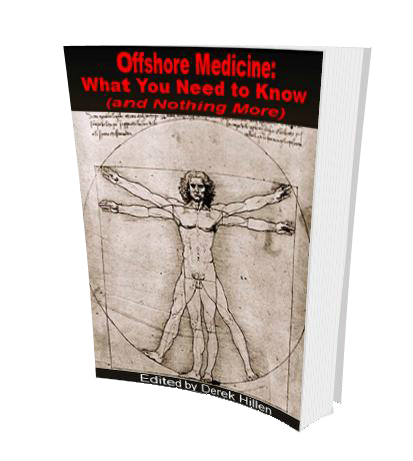- Boat
- Articles
- About
- Tehani-li Logs
- 2004
- Uligan Maldives
- Man, Oh Man, Oman
- Eritrea: The Nicest Place You’ve Never Heard Of
- Cruising Notes: Oman to Eritrea – From Pirates to Cappucinos
- Old Testament Sudan
- Egypt: Legend, Myth and Reality
- Thoughts on Cruising the Red Sea
- Greece: Civilization Again
- Montenegro
- Malta
- Sardinia, Italy
- Barcelona, Spain
- 2003
- 2002
- 2001
- 2004
- Contact
Old Testament Sudan
The largest country in Africa and home to the tallest people in the world, (named funnily enough, the “Dinka”), Sudan, or “the Sudan,” is basically indecipherable and wild, wild, wild. We spent about a month there and just scratched the ancient dusty surface. Of all the places on the trip so far, Sudan comes the closest to walking back in time right into a live nativity scene.
The people still wear robes and turbans, ride camels, raise goats and look fierce. Jesus in sandals wandering down the dusty track with a walking stick would not look out of place here. In fact we expected to round a corner and see him at any moment. (I always had a bottle of water with me to offer him a drink and score some points if I got a chance).
Cars are few, there are no malls whatsoever and the most modern building we would see would be a gas station. I imagine the capitol, Khartoum, must be different. Our experience was limited to Sudan’s Red Sea coast but we saw plenty of that.
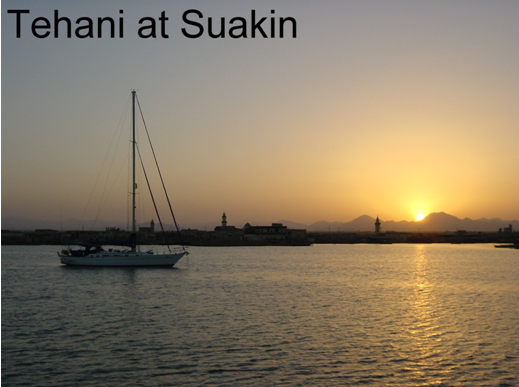
Also, interesting for me, is that we have some family history here, of all places. My grandfather on my mother’s side used to own a coffee plantation in the extreme southeast of the country near the border of Zaire (or the Democratic Republic of Congo or whatever they’re calling it these days).
It is in a lush, jungle area with tall mountains loaded with lions, leopards and loud music – real Edgar Rice Burroughs stuff. Unfortunately, as it is located in the south of the country, where there is a long running both-sides-lose civil war going on, we could not visit the area. It was also about 1,500 miles overland from where we were so logistics in crossing that much turf in a place as primitive as Sudan would have been considerable.
Coincidentally, our agent in Suakin, Mohammed, (you may have noticed that is a very common name in Islamic countries; every family seems to have at least one.) used to live and work in Yei, the same town my grandfather had his plantation. He told us it was a beautiful area with much wildlife and lots of coffee growing on the bright green hillsides which are bathed in continual tropical sunshine and drenched in almost continual tropical rain for 9 months of the year. Apparently, it was a popular place for ex-pats before World War Two and was even known as “Little London.” With all the benefits of independence I don’t think there is much there now.
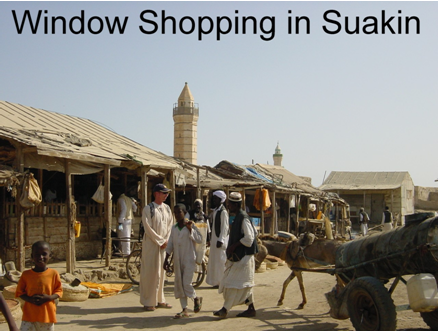
Our first stop in Sudan was at Marsa Esh Sheikh, also labeled on the charts as Marsa Sheikh Sad. I was “sad” too as we had our one year old Yamaha 15 HP outboard stolen there! Replacement value will be close to two grand. That is a very long story I won’t go into here and was our only unpleasant experience in the country but a common enough tale throughout Africa.
The wealth gap between your average Westerner and a ragged Sudanese fisherman is incomprehensible. In my opinion, that still doesn’t make theft right but when somebody sees an opportunity to walk away with 2-3 years worth of earnings in one go, whether Allah is watching or not, the temptation is probably just too great.
On Mohammed’s advice (our agent again) I duly filed a report with the police in Suakin. We sat in big armchairs in the police chief’s cement “office” swatting flies all morning as I recited the story and Mohammed translated. After a lot of smiles and BS they told us that they would put the word out to other police in the area and would let us know if anything turned up. Then everyone stood up to indicate the meeting was over. Translation: we’ve done all we’re gonna do for you. Adios.
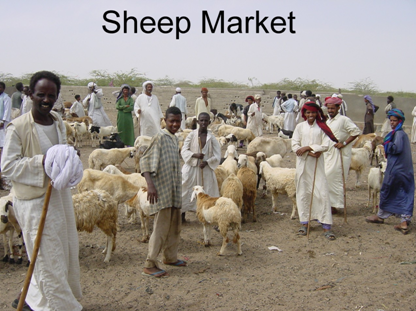
I motioned everyone to sit down and asked Mohammed to translate the following: That outboard is important to us. We use it on the dinghy to go ashore every day. I am offering a reward. The reward is $200 if it is returned to us in the next 24 hours, $100 after that. Boy, now everyone is interested. Let’s talk some more. Yep, got that enthusiasm level right up to the ceiling. We spent another hour or so going over the crime and thief-catching ideas.
Now we really didn’t think we would ever get the outboard back and so far, we are right. But we thought we had to give it a shot. The very next day Mohammed told us the police had collared three fishermen and they were sitting in jail right now. And there they would sit until one of them “remembered” something.
They were still there when we left two weeks later! I felt bad as I, nor the cops I believe, had any way of knowing if they even had the right guys. You couldn’t really write a detective thriller with that kind of police work. So we are now in the market for another outboard engine.
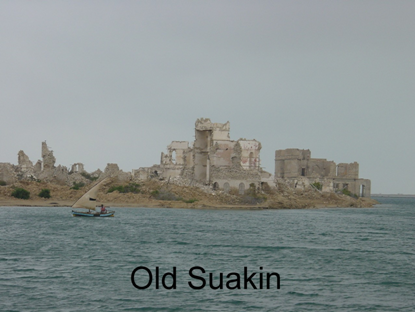
We spent most of our time in the ancient port of Suakin – the last active slave market in the world. They shut that stuff down a long time ago; about 1950! Suakin an important trading port for thousands of years, oozes history and is a very dramatic anchorage as you can see from the photos. There is an island of ruins next to where we dropped the hook that is as old as the hills. This is “Old Suakin,” and basically looks like those awful pictures of Hiroshima in 1945.
But, unlike Japan or Eritrea, there was no fighting here – the buildings just came to pieces from neglect when the British, the former colonial masters, moved their administrative HQ from Suakin up the coast 30 miles to Port Sudan – now Sudan’s second largest city with over 2 million people (and a total dump). Eagles, ospreys and many other birds of prey have claimed the ruins as their own and build rough nests on top of all the old piles of white rock.
A very loving couple of eagles decided our mast would do for a summer cottage and every morning would land on the top spreaders with large sticks in their beaks to build their dream home. They would drop a stick on the spreader and watch with a puzzled expression (if birds can do that) as it bounced off the metal and landed “clunk!” on our deck 40 feet below. The fact that this happened every single morning must be a testament to perseverance on their part – or maybe just low avian intelligence, I’m not sure.
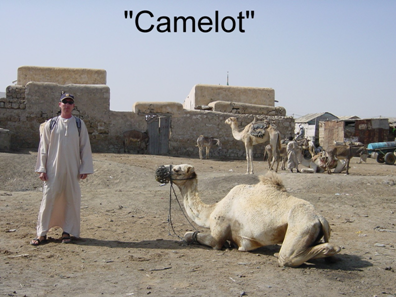
Now there isn’t much difference between “Old Suakin” and “New Suakin.” New Suakin just has people. The new part of the town is behind the anchorage and is a photographer’s dream. People are still living in ruins but are dressed in the latest Old Testament fashions going about their daily business of getting water, feeding camels, buying rice in the bustling market, dodging donkey carts and the very rare claptrap automobile, drinking coffee and chatting with friends sitting on benches watching the dusty world of 2,000 years past go by.
If you go there with a camera you will meet two diametrically opposed reactions from the colorful and usually friendly populace. Type A: “Camera! Take my picture, take my picture! PLEEZE mister, take my picture!” and Type B: “Camera! Put that away! NO pictures! Give me your film!!!” We were never sure of the reaction we would get and would always ask first. But still you could take a picture of someone with their very willing participation and in the background would be some grouch who would run forward and hassle you until somebody gently pulled him away and talked to him while you could continue your stroll.
It was alternately entertaining and threatening. Sudan was also the only place I have ever been where NOBODY asked me, “What country? Where you from?” Nobody seemed to care. And a good thing too considering it was only a little while ago the US unleashed some cruise missiles here.
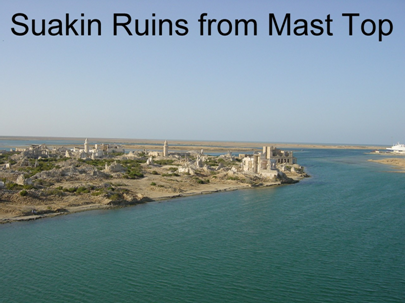
After enjoying the bright lights of biblical Suakin, we wanted to go to Port Sudan where we could get some things that Suakin didn’t have; like fruit juice or paper towels, nothing too sophisticated. I also needed to have my little alternator repaired. So we hopped in an ancient, beat-up red taxi held together by tape, bailing wire and frequent prayer for a bouncy ride up the coast to the Big Smoke.
It was an interesting drive on a straight road over the desert plain with tall, absolutely barren mountains looming in the background. Every few miles there was a Bedouin encampment with tents, runny-nosed kids, camels or donkeys and the ubiquitous white pickup with plastic trash bags strewn across the landscape.
Interesting, yes, romantic, no. To our surprise Port Sudan had much less to offer than even a place like Columbo, Sri Lanka. In fact, it looked like small town Sri Lanka with dirt and trash blowing everywhere, ugly one story cement buildings and the streets were even clogged with Indian tuk-tuks, the same three wheeled taxis you find all over Sri Lanka. The people, of course, were different; tall, black, swathed in flowing white garb and very friendly.
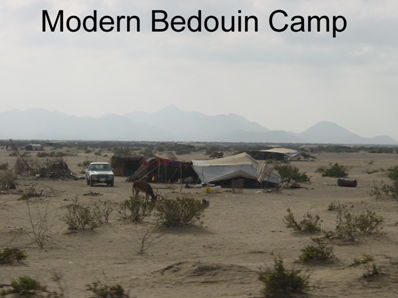
We also thought we might find a used outboard (no such luck) and we hoped to use the internet as they don’t have that modern convenience 2,000 years down the road in Suakin. After a day there we were able to use the internet (Palace Hotel, the Hilton only had one terminal and didn’t have their air con working that day!) but we failed on everything else.
Well, we found some fruit juice, the tiny little one serving size you put in small children’s lunch boxes and then only a dozen of these were available in the whole city. Paper towels were discovered in only one place (Derwish Market) in packs of two very small rolls for over $5 a pack!!!! No thanks.
We rode back to Suakin with our juice and happy at least to have seen the place and been able to update the website (Eritrea). We also enjoyed the wacky trucks barreling along the desert highway with all sorts of colorful ragmuffins often sitting on top of whatever cargo they were stuffed to overflow with.
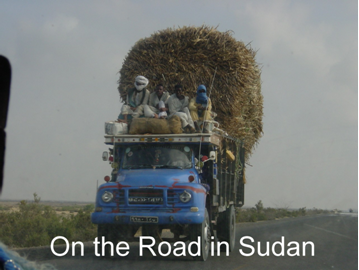
Before leaving, I climbed the mast to check the rigging. This is something we do periodically before heading out. I also took advantage of that eagle’s viewpoint to take some photos of the ruins and the town from 70 feet up. I think they turned out pretty well. We finally had our weather window and left boomtown Suakin for points further north.
Sailing north in the Red Sea is a challenge as the wind ALWAYS comes screaming down from the north, just where you want to go. Being a SAILboat you can’t just go directly into the wind but have to sail at an angle to it, for us that is about 45-60 degrees in rough weather, 30 degrees off the wind in calmer seas.
The other thing about the Red Sea is that any breeze at all will immediately kick up steep, closely packed chop 5-6 feet high which sort of looks like the teeth of a metal comb in profile – one wave right after the other, hard and unyielding, slamming into the boat and stopping you dead in the water.
This was the sort of weather we hoped to avoid and of course, this was exactly the weather we had as soon as it was night and too late to duck in an anchorage anywhere. You buys your ticket you takes your chances. We had 30 knots of wind in the face all night with seas breaking on board and spray flying over the dodger and bimini. Not pleasant and the rough jerky motion make Ariel sick. First thing in the morning it was time to look for an anchorage to rest up and wait for the next “window.”
We found that at Marsa Inkeifal, about 110 miles up the coast from Suakin. So you can see, in 24 hours, we didn’t get so far. Usually, we like to sail 150 miles a day but in those unpleasant conditions, 110 miles was just fine. A “Marsa” or a “Khor,” by the way, are Arabic for sheltered anchorages, usually estuaries that wind inland a mile or more from the sea giving you beautiful calm water and 360 degree protection from the wind, similar to the Rias in Portugal.
We found the best thing we liked about the Red Sea were the anchorages. Sure, you’ve had a shitty night out, the wife is sick, the boat is tired, you are exhausted and a good sleep is what you need most. No problem, head for the nearest marsa and if it is blowing 50 knots outside, your anchorage will be totally flat and that exquisite night’s sleep guaranteed. It does blow in some of the marsas too but with no wave or roll coming in, who cares?
We were the only boat in Marsa Inkeifal and after we got the hook down in the afternoon two fishermen came out in a skiff from their camp to say hello. We conversed in my very basic Arabic and one of the guys knew a little English. They seemed friendly and didn’t ask for anything other than ciggies, which we don’t have, and we promised to go ashore and visit them the next day. This we duly did and were surprised to see their hut was, for Sudan, a five star job. It was actually made of lumber and burlap with straight walls and proper corners, not the ramshackle, multicolored plastic bag coated, driftwood sheep shelters we had been accustomed to seeing all along the coast.
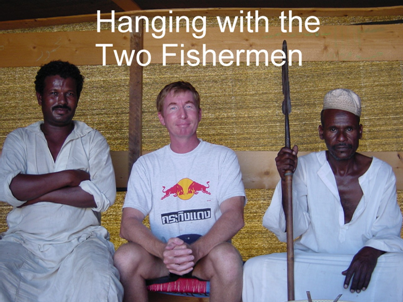
We stayed for coffee and Saddiq, the fisherman who actually knew some English, went into the back room of the hut and came out with a computer NOTEBOOK holder with some documents in it. I don’t know what he was looking for as he never found it but it was stuffed with faxes and Xeroxes.
They made coffee for us just like they way they do in Eritrea, on an open fire with the jug-shaped clay coffee pot burbling away. We were served with little egg cup sized mugs, no handles, which they fill HALF with white sugar and the other half with dark bitter coffee spiced with cardamom and ginger. Omar, the other fellow, lived in the mountains and had a real spear. We took a picture here with the digital and they were so happy to see the result on the little LCD screen immediately.
(I asked first and they were the “Type A” take-my-picture Sudanese). Then, weirdly, they actually offered us a case of bottled water! Having become inured to the constant begging in the Muslim world we were surprised to be on the other end. These guys were more than simple fishermen but more of what we couldn’t determine. After coffee, and some very strong tea, we all decided to set off and find some camels.
An hour later of traipsing around the desert with their Zeiss binoculars (!!!) we found one and Omar actually called it over. If you ever need a camel in the Sudan this is how you do it; raise right arm in pseudo Nazi salute and in a loud commanding voice shout, “HEP! HEP! HEP!” This seemed to work and I have tried it later with varying degrees of success, I might add.
Our next stop up the coast was Khor Shinab – a huge anchorage three miles inland that looks like Lake Mead and is one of the top stops in the Red Sea. This time we arrived there with nine other boats! Of course, we all knew each other and it was fun catching up with friends such as Terry and Elaine on Virgo’s Child, whom we had talked with on the radio many times but hadn’t seen since Thailand.
I should mention that every morning there is a yachties net on the HF radio. All yachts in the area check in and give their position and weather. This is helpful not just to keep track of friends but also you get an instant weather report from the guy 50 miles up the coast where you might want to go today. His weather is bad and yours is good? Solution: stay put (yours will be bad soon too). The weather forecasts for the entire Red Sea are, how shall I put it? Bad. Real BAD.
We get weather information via the HF radio once a day on the computer showing wind arrows for the entire area in 12, 24 and 48 hour forecasts. These are useful as they are usually a contra-indicator of what will really happen. And if they do get it right you still have to double the forecast wind speed to match reality.
So the morning ritual for us includes Derek getting up at dawn (Ariel is the night owl – can’t change a lifetime of bad habits!), making hot chocolate and turning the radio on. I write down the weather forecast other boats get from Buoyweather (another service) and then copy down every yacht’s position and current weather.
We also check in. Net control is another yacht or two and there is lots of relaying messages as propagation is usually not so great. That is how we keep in touch with the yachting crowd. We also send and receive emails daily on board, again using the HF radio and the computer.
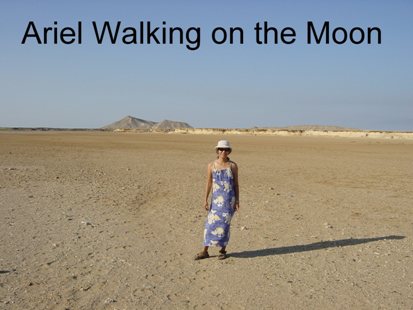
Back to Shinab. This place is huge. You could put a few aircraft carriers in here.
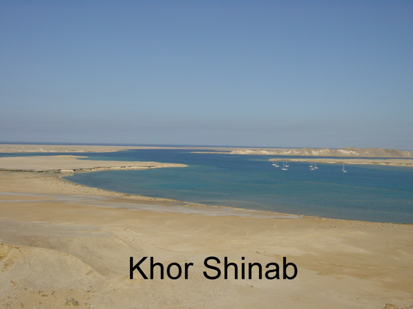
The landscape is again, stark, desolate, no green stuff anywhere. Moonscape is a better word. But the desert is so beautiful with the reds and golds and purples of the different minerals layered in colored bands on the faces of the mountains changing color all day long. There were a few flamingoes in the shallows and the odd camel wandering around; a reminder that you were still on planet earth.
We stayed a couple of days here and had a party on board. Tehani has a big cockpit so we invited the entire anchorage and that night we were packed with 25 different drunks! Another yachtie custom is getting together every evening for “sundowners.” The Australian and Canadian yachts make this a religious necessity (any excuse for a drink, eh!) and we frequently participate.
Usually, 2-3 couples get together on somebody’s yacht in the evenings, have a few quiet drinks and snacks and then go back to their respective boats for dinner. It is a nice and relaxing way to finish off the day and get to know your neighbors. However, you put 25 thirsty sailors on board at one time in the middle of the desert and things really take off!
The night ended with one elderly, mild mannered fellow (who shall remain nameless) falling out of Tehani and bouncing off his fortunately rubber dinghy right into the black water. I immediately jumped down and fished him out. Pulling him up by his armpits he still had his hat and glasses on with a big smile plastered across his face as he broke the surface! His wife was not amused.
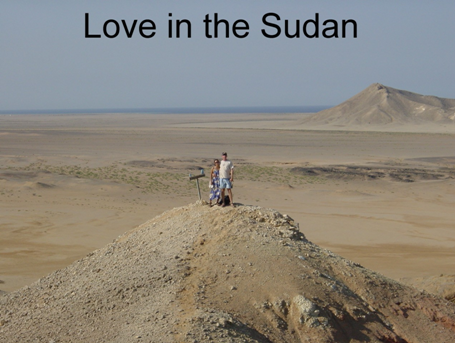
While in Khor Shinab we also climbed Quoin Hill and took some photos of the hills and anchorage. After that we hit a few more marsas on the Sudan coast and then made the jump to Egypt, from where we are uploading this report.

